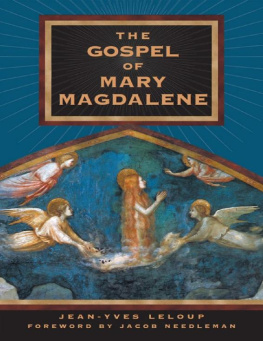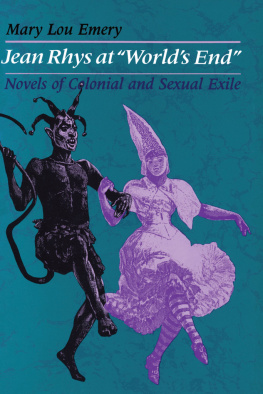Sr. Mary Jean Dorcy - St. Dominics Family: Over 300 Famous Dominicans
Here you can read online Sr. Mary Jean Dorcy - St. Dominics Family: Over 300 Famous Dominicans full text of the book (entire story) in english for free. Download pdf and epub, get meaning, cover and reviews about this ebook. year: 2015, publisher: TAN Books, genre: Non-fiction. Description of the work, (preface) as well as reviews are available. Best literature library LitArk.com created for fans of good reading and offers a wide selection of genres:
Romance novel
Science fiction
Adventure
Detective
Science
History
Home and family
Prose
Art
Politics
Computer
Non-fiction
Religion
Business
Children
Humor
Choose a favorite category and find really read worthwhile books. Enjoy immersion in the world of imagination, feel the emotions of the characters or learn something new for yourself, make an fascinating discovery.

- Book:St. Dominics Family: Over 300 Famous Dominicans
- Author:
- Publisher:TAN Books
- Genre:
- Year:2015
- Rating:3 / 5
- Favourites:Add to favourites
- Your mark:
- 60
- 1
- 2
- 3
- 4
- 5
St. Dominics Family: Over 300 Famous Dominicans: summary, description and annotation
We offer to read an annotation, description, summary or preface (depends on what the author of the book "St. Dominics Family: Over 300 Famous Dominicans" wrote himself). If you haven't found the necessary information about the book — write in the comments, we will try to find it.
St. Dominics Family: Over 300 Famous Dominicans — read online for free the complete book (whole text) full work
Below is the text of the book, divided by pages. System saving the place of the last page read, allows you to conveniently read the book "St. Dominics Family: Over 300 Famous Dominicans" online for free, without having to search again every time where you left off. Put a bookmark, and you can go to the page where you finished reading at any time.
Font size:
Interval:
Bookmark:
Saint Dominic's Family
The Lives of Over 300 Famous Dominicans
Sister Mary Jean Dorcy, O.P.
| REVISORES ORDINIS: | Thomas C. Donlan, O.P. | |
| John A. Henry, O.P. | ||
| IMPRIMI POTEST: | John E. Marr, O.P. | |
| Provincial | ||
| NIHIL OBSTAT: | Thomas C. Donlan, O.P. | |
| Censor Librorum | ||
| IMPRIMATUR: |  | James J. Byrne, S.T.D. |
| Archbishop of Dubuque | ||
| November 6, 1963 |
Originally published in 1964 by The Priory Press, Dubuque, Iowa.
Copyright 1964 by The Priory Press
Copyright 1983 by Sister Mary Jean Dorcy, O.P.
Library of Congress Catalog Card No.: 83-70219
ISBN: 0-89555-208-6
All rights reserved. No part of this book may be reproduced or transmitted in any form or by any means, electronic or mechanical, including photocopying, recording, or by any information storage or retrieval system, without permission in writing from TAN Books and Publishers, Inc.
TAN Books
Charlotte, North Carolina
www.TANBooks.com
1983
This book is affectionately dedicated to
MOTHER MARY FRANCES MILLER, O.P.
whose interest and encouragement have
made it possible.

"Then the Lord placed His hand on the shoulder of the Blessed Virgin, and said to the blessed Dominic, 'I have given thine Order to My Mother.' Then He said again, 'And wouldst thou really see thine Order?' And he replied, 'Yea, Lord.' Then the Blessed Virgin opened the mantle in which she seemed to be dressed, and extending it before the eyes of Dominic, so that its immensity covered all the space of the heavenly country, he saw under its folds a vast multitude of his friars. The blessed Dominic fell down to thank God and the Blessed Mary, His Mother, and the vision disappeared, and he came to himself again..."
From Saint Dominic,
by Sister Mary Jean Dorcy, O.P.
PREFACE
To be asked to write your family history is a work not many authors with family pride could resist, but whether it would be readable by any but equally proud members of the family is yet another thing. There is no task more booby-trapped. When loyalty, enthusiasm, and dedication set to work on family lore, tradition, and history, and when the family tree reaches back almost eight hundred years, heaven help everybody!
That Sister Mary Jean Dorcy, O.P., has nimbly danced her way through eight hundred yearsless a fewof Dominicans, has avoided every one of the pitfalls and produced a collection of "lives" which is not only informative but entirely delightful, is a tribute to her balance as a scholar, her discernment as a woman, and her integrity as a Dominican. Talent, a sense of humor, and above all a mastery of the art of understatement (and where is the temptation to overstate greater than when writing of one's favorite relatives?) enhance every page of her work which, one soon discovers, it is not easy to put down.
Drawing from every available source in the history of her Order, Sister Mary Jean has culled facts and distributed emphases with the hand of an expert. Her 339 little biographies sparkle with judiciously chosen details, highlights, and decorations.
Beginning with the , we find not only the familiar greatsDominic, Blessed Jordan, Peter Martyr, Margaret of Hungary, Thomas Aquinas, Raymond of Pennafort, Albert the Greatbut also many other members of the Order whose stories have been eclipsed by their more impressive brothers. Here we meet the men who knew St. Dominic personally and whose recollections have created the portrait of the saint. Strangely, to know them is to draw closer to Dominic, to discern some of the magic of the man who drew so many others into the service of the Lord, and high sanctity along the way. Here are tales of the evangelizing of Europe which both map the growth of the Church in the blood of her martyrs and trace the political history of the times.
There is Moneta of Cremona who loaned Dominic a bed to die on and a tunic to die in; Blessed Isnard who drove out a devil by putting his arms around a man possessed and embracing him; Blessed Peter Gonzales who has become, for some unknown reason, St. Elmo to the sailors of the world; and Anselm and his companions who went off to the Tartars facing as fantastic an adventure as any traveler to the moon.
The forerunners of the illustrious English Dominicans appear in this century together with Bishop Clement of Dunblane who brought the Order to Scotland and St. Ingrid of Sweden who founded that country's first Dominican convent in 1281. Blessed Santarem was a saint with a misspent youth, and Blessed Zedislava Berka is a delightful new friend for wives and mothers. Of illustrious female members there was no lack in this centurySt. Helen of Hungary, novice mistress to the little girl who became St. Margaret; Constance, queen of Russia and younger sister to Margaret, whose life was one of sudden success and crushing reversal; Mechtilde of Magdeberg, a guest in the same convent asand therefore a friend ofthe great St. Gertude and her sister Mechtilde; to say nothing of the three charmers, Blessed Diana, Blessed Cecelia, and Blessed Amati.
The introduces us to two figures of controversy, Munio de Zamora, deposed as Master General by a pope but defended by the Order, and John Tauler, often misnamed a forerunner of the Reformation. There was the scientist, Theodore of Saxony; the vernacularist, Blessed Jordan of Pisa; the ecumenist, Bartholomew the Little; the Icelander, Bishop John Haldorsson; and the Ethiopian, Philip de Sceva. The latter, scion of the royal house, was martyred like John the Baptist for insisting that the reigning Christian monarch keep to one wife instead of several.
Among the familiar names we find St. Agnes of Montepulciano, Blessed Margaret of Castello, Blessed Imelda Lambertini, Blessed Henry Suso, Blessed Raymond of Capua, and, of course, outdazzling them all, St. Catherine of Siena.
Here also are two maidens, relatively unknown, whose stories are pure delightBlessed Villana de Botti and Euphemia of England. Villana, worldly, witty, and pretty, as a child tried to run away like St. Catherine of Siena to become a hermit in the desert. Brought back by her amused family, she thereafter pursued a frivolous life until the day when she saw reflected in her mirror a Medusa instead of the elegant coquette. Turning to penance, she promised, like a familiar saint of the , that after her death she would send "flowers from heaven...."
Euphemia was the daughter of Edward II of England, sister to John of Gaunt and the Black Prince. Here is a tale of intrigue and suspense, with Euphemia fleeing the court and somehow managing to keep a hop, skip, and a jump ahead of her father's men. She ended her days as laundress to a convent of highborn ladies whose rank prevented them from assuming such menial tasks. One longs to have been present when they discovered that their wash lady was the daughter of the king of England.
The more one reads this book, the more one marvels at the precision of its gifted author who has ruthlessly pared down accounts which must have filled volumes without sacrificing the warm, living quality of her portraits. Brevity, rarely considered a feminine characteristic, is one of Sister Mary Jean Dorcy's outstanding virtues.
In the Blessed John Dominici, St. Antoninus, Fra Angelico, Blesseds Margaret of Savoy and Joanna of Portugal, and Alan de la Roche, devotee of the rosary. Two child brides, Mary Manciniwed at twelveand Clara Gambarcortiwed at thirteen, became friends of St. Catherine and entered the Order, and Blessed Anthony Neyrot seems a likely patron of all who have suffered brain-washing and intimidation. Fearful of death, he recanted the Faith, became an adopted son of a king, married a Turkish lady of position, commenced a translation of the Koran, and then recanting his recantation, was stoned to death proclaiming Christ and wearing once again his Dominican habit.
Next pageFont size:
Interval:
Bookmark:
Similar books «St. Dominics Family: Over 300 Famous Dominicans»
Look at similar books to St. Dominics Family: Over 300 Famous Dominicans. We have selected literature similar in name and meaning in the hope of providing readers with more options to find new, interesting, not yet read works.
Discussion, reviews of the book St. Dominics Family: Over 300 Famous Dominicans and just readers' own opinions. Leave your comments, write what you think about the work, its meaning or the main characters. Specify what exactly you liked and what you didn't like, and why you think so.










